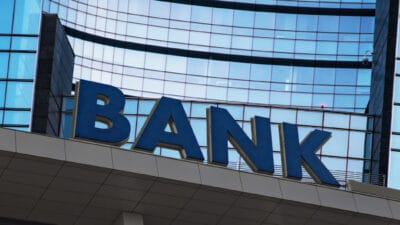We're in the thick of ASX reporting season, some results have been positive and some have been rather disappointing. The ASX bank share sector hasn't exactly been lighting up this February.
Reporting season is just as much about investor expectations for the financial numbers as it is about the actual growth (or decline) in absolute terms. For example, if a business is expected to report a profit decline of 20% and it only fell by 10% then that's a win.
Similarly, if profit rises 5% but it was expected to go up 10%, then this is seen as a disappointment. Perhaps the market was expecting too much?
Profits go backwards
In the Commonwealth Bank of Australia (ASX: CBA) FY24 first-half result, the bank reported that statutory net profit after tax (NPAT) declined by 8% to $4.8 billion. It blamed banking competition and higher operating expenses.
The Westpac Banking Corp (ASX: WBC) FY24 first quarter saw $1.5 billion of net profit, which represented a 6% decline on the FY23 second-half quarterly average.
The Bendigo and Adelaide Bank Ltd (ASX: BEN) FY24 first-half result saw cash earnings after tax of $268.2 million, down 5% compared to the second half of FY23. It saw its total lending fall 0.7% amid "competitive market pressures", while the net interest margin (NIM) fell 15 basis points (0.15%) to 1.83% because of "price competition in both lending and deposits and a higher level of liquid assets."
We have seen the Reserve Bank of Australia (RBA) cash rate jump to 4.35%. While ASX bank shares did initially pass on the increases faster to borrowers than savers, things have changed. Competition has reduced bank profitability in margin terms.
Banks need to offer a much better interest rate to savers to attract their deposits. Lenders need to offer a good rate to borrowers to ensure they stay, and to win new borrowers, otherwise, banks will lose market share over time.
The higher interest rates have also led to lower demand for credit as well as rising arrears. The longer rates stay at this level, the worse things might get for arrears and bad debts for ASX bank shares. I'm not predicting catastrophe, just a return to a normalised level of bad debts for banks.
The real winners from higher interest rates seem to be savers.
What next for ASX bank shares?
The Bendigo Bank CEO Marnie Baker had a number of interesting comments about the situation:
The bank expects the official cash rate to remain at current levels for most of 2024 following the recent pause from the Reserve Bank. Inflationary pressures remain persistent but are moderating. The Australian economy is likely to outperform its peers over time, although we expect unemployment levels to rise in the short-term. Economic growth is likely to be very modest in financial year 2024 before showing improvement in financial year 2025.
Cost of living pressures will continue to present a challenge to Australian households.
Asset quality remains intact, and marginal increases in 90-day arrears in the Bank's residential lending portfolio represent increased cost of living pressures experienced in some areas of the community. We expect bad debts to trend upwards and move towards longer-term averages over time. Our home loan customers remain well ahead of their repayments with 41% one year ahead of repayments. Pleasingly, more than 85% maintain a financial buffer.
Of course, that does suggest that close to 15% don't have a financial buffer, so hopefully they are able to ride out this period. It is a very interesting time for ASX bank shares. I'm personally not expecting strong growth in the short term for the sector.









